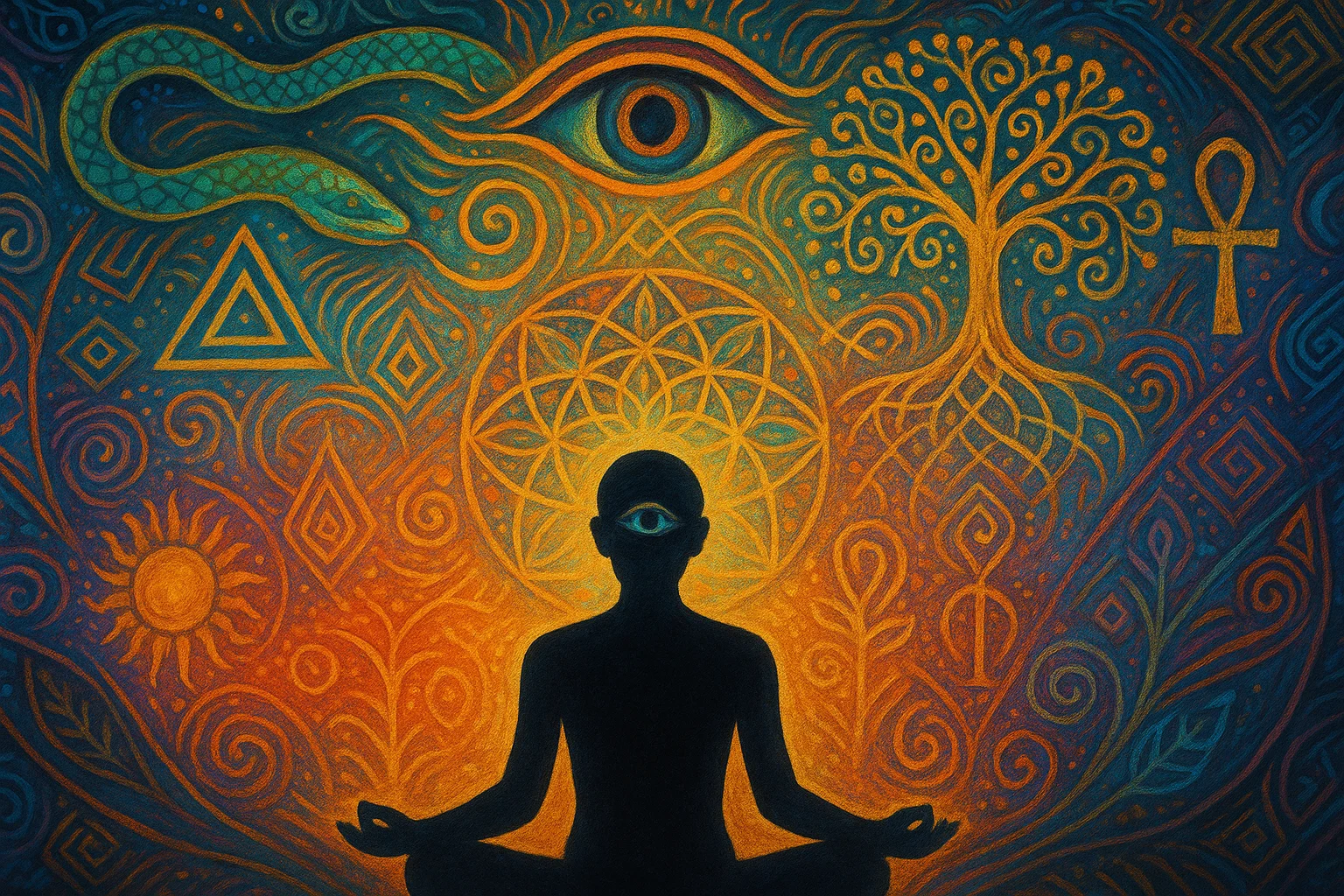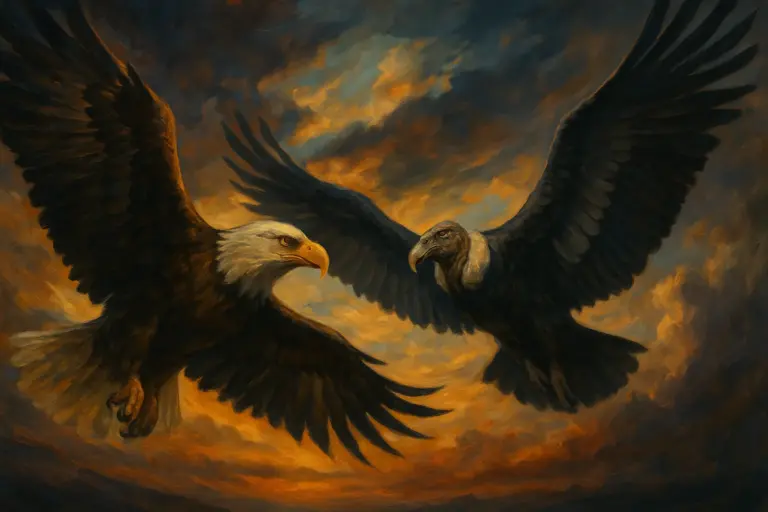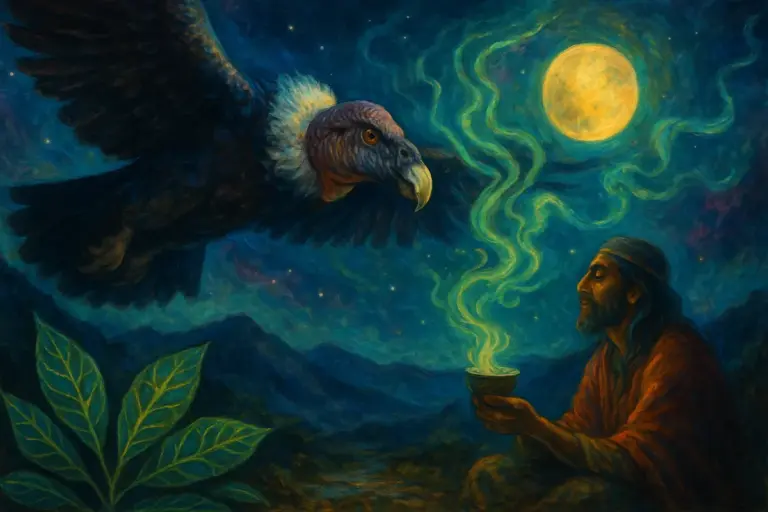What Are Ideograms? From Ancient Symbols to Yagé Visions
In the sacred mountains of Colombia, where the ancient yagé vine has guided healing ceremonies for countless generations, participants often speak of receiving visions that transcend ordinary language. These are not random hallucinations but precise symbolic communications—ideograms that carry meaning beyond words, teachings that bypass the rational mind to speak directly to the soul.
An elder once told us, “If you draw it three times, it’s not for you—it’s for the people.” This wisdom points to something profound about the nature of ideograms: they are not personal possessions but collective treasures, symbols that emerge from the depths of consciousness to serve the healing and awakening of all beings.
But what exactly are these mysterious symbols that bridge the gap between the ancient world and the sacred plant medicines of the Amazon? How do the same visual languages that adorned Egyptian tombs and Norse runestones find their way into the visions of modern seekers drinking yagé (ayahuasca) in the Colombian mountains?
The answer lies in understanding that ideograms aren’t just historical curiosities gathering dust in museums. They’re living, breathing symbols that speak directly to the human soul—a universal language that transcends time, culture, and the boundaries between ordinary and non-ordinary reality.
Defining Ideograms — Meaning Beyond Words
Visual Language That Speaks to the Soul
An ideogram is far more than a simple picture or drawing. It’s a graphical symbol that represents an idea, concept, or entire story without relying on the sounds of spoken language. Think of it as a direct transmission from mind to mind, bypassing the sometimes clumsy vehicle of words entirely.
Unlike alphabetic letters that represent sounds, ideograms carry meaning in their very form. The red circle with a diagonal line that universally means “forbidden” is an ideogram. The Chinese character for “mountain” that actually resembles peaks reaching skyward is an ideogram. The Egyptian ankh that embodies the concept of eternal life is an ideogram. Each one speaks directly to our visual cortex, triggering understanding that feels almost instinctual.
The Dual Nature of Symbolic Understanding
But here’s where it gets fascinating: ideograms operate on two distinct levels. Some are immediately comprehensible—you see a stylized eye and understand it represents vision or watching. Others require what scholars call “familiarity with prior convention,” meaning they’re part of a cultural symbolic vocabulary that must be learned. Yet even these seemingly arbitrary symbols often carry deeper resonances that speak to something universal in human consciousness.
This dual nature of ideograms—immediate and learned, universal and cultural—mirrors exactly what happens in ayahuasca visions. Participants often report seeing symbols that feel both completely foreign and utterly familiar, as if they’re remembering a language they never learned but somehow always knew.
Consider the experience of lmharold, one of our ceremony participants, who shared: “The visions wove meaning into my life issues in ways I never expected. Symbols appeared that I couldn’t name but somehow understood completely. It was like the plant was speaking in pictures that bypassed my thinking mind and went straight to my heart.”
This is the power of ideographic communication—it speaks to layers of consciousness that words simply cannot reach. When we encounter ideograms, whether carved in ancient stone or dancing in our visions, we’re accessing a form of communication that predates language and may well outlast it.
The Language Before Language
The ancient Egyptians understood this profoundly. Their hieroglyphic system wasn’t just a writing method—it was a technology for encoding spiritual truths in visual form. Each symbol was believed to carry not just meaning but actual power, capable of influencing reality through its very presence. Temple walls weren’t just decorated; they were programmed with ideographic spells designed to maintain cosmic order.
Similarly, when modern ayahuasqueros describe their visions, they often struggle to translate what they’ve seen into words. The symbols they encounter seem to carry layers of meaning that unfold over time, revealing new insights with each contemplation. This isn’t a failure of language—it’s evidence that ideograms access a deeper stratum of consciousness where meaning exists in pure, undiluted form.
Ideograms Across Ancient Cultures
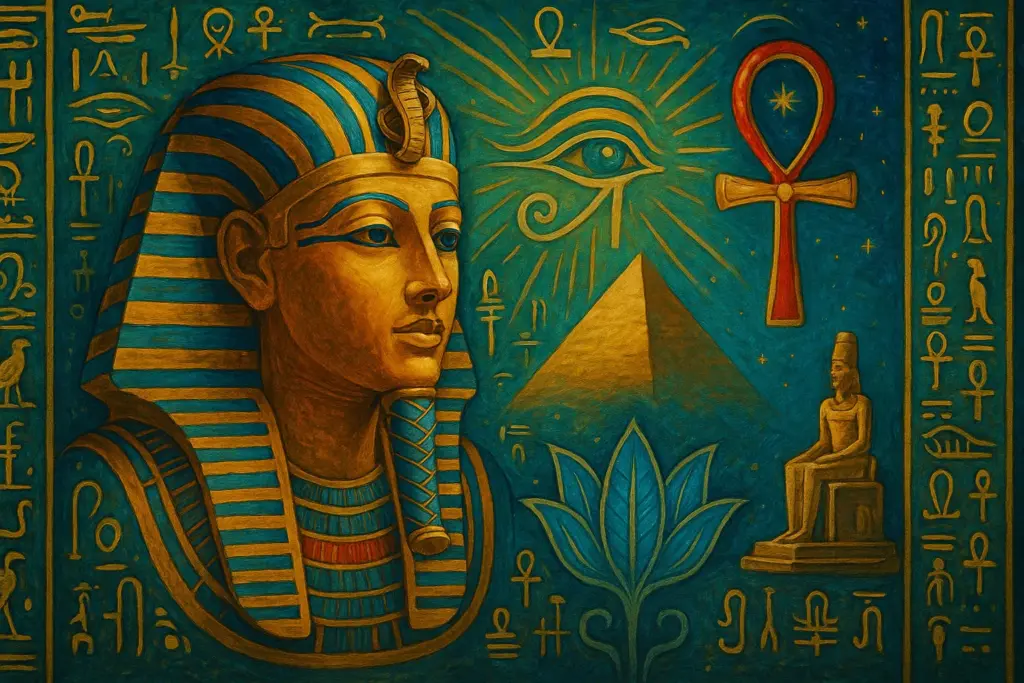
Mesopotamian Foundations
The story of ideograms is the story of humanity’s first attempts to capture the invisible world in visible form. Long before our ancestors developed alphabets, they were creating visual symbols that could hold and transmit complex spiritual and practical knowledge across generations.
In ancient Mesopotamia, the very cradle of civilization, cuneiform writing began as a system of ideograms pressed into clay tablets. But these weren’t just administrative records—they were attempts to map the relationship between the earthly and divine realms. The symbol for “god” in early cuneiform resembled a star, connecting celestial observation with spiritual understanding in a way that would influence human consciousness for millennia.
Egyptian Sacred Technology
The Egyptians took this concept even further, developing a sophisticated ideographic system that modern scholars are still deciphering. Their hieroglyphs weren’t just pictures representing words—they were multidimensional symbols capable of operating on literal, phonetic, and mystical levels simultaneously. The symbol of the eye of Horus, for instance, wasn’t just a representation of sight; it was a mathematical formula, a protective amulet, and a map of consciousness all rolled into one elegant ideogram.
But perhaps most intriguingly, Egyptian priests understood that ideograms could serve as vehicles for what they called “divine emanation.” They believed that properly constructed symbols could actually channel spiritual forces into the physical world. This wasn’t superstition—it was a sophisticated understanding of how visual symbols interact with human consciousness to create measurable effects on perception and behavior.
Chinese Combinatorial Wisdom
Across the Pacific, Chinese civilization was developing its own profound relationship with ideographic communication. Chinese characters began as pictographs—stylized drawings of the things they represented. The character for “tree” looked like a tree, the character for “mountain” resembled peaks. But over time, these simple pictures evolved into complex ideograms capable of expressing abstract concepts like “harmony,” “wisdom,” and “the way.”
What’s remarkable is how Chinese ideograms developed the ability to combine and recombine to create new meanings. The character for “bright” combines the symbols for “sun” and “moon.” The character for “good” combines “woman” and “child.” This wasn’t just linguistic efficiency—it was a recognition that meaning emerges from the relationship between symbols, not just from the symbols themselves.
This combinatorial aspect of Chinese ideograms mirrors something profound that happens in ayahuasca visions. Participants often report seeing symbols that morph and combine in real-time, creating new meanings through their interactions. It’s as if the plant medicine activates the same cognitive processes that ancient Chinese scribes used to develop their writing system.
Norse Runic Magic
In Northern Europe, the Norse developed their own ideographic system in the form of runes. But unlike other writing systems, runes were never purely utilitarian. Each rune was simultaneously a letter, a word, a concept, and a magical tool. The rune Fehu, for instance, represented not just the sound “F” or the concept of “cattle,” but the entire complex of ideas around wealth, abundance, and the flow of energy through material reality.
Norse practitioners understood that runes could be used for divination, magic, and spiritual communication precisely because they operated as ideograms—symbols that carried meaning beyond their literal representation. When a völva (Norse seeress) cast runes, she wasn’t just reading random symbols; she was interpreting a visual language that connected the mundane world with the realm of the gods.
Universal Symbols Across Cultures
Indigenous cultures across the Americas developed their own rich traditions of ideographic communication. From the petroglyphs of the American Southwest to the quipu knot-writing of the Inca, Native American cultures understood that symbols could serve as bridges between the human and more-than-human worlds.
What’s particularly fascinating is how many of these ancient ideographic traditions share common symbols despite developing in complete isolation from each other. The spiral appears in Celtic art, Aboriginal dreamtime paintings, and Amazonian textiles. The tree of life shows up in Norse cosmology, Kabbalistic mysticism, and Mayan codices. The serpent eating its own tail—the ouroboros—appears in Egyptian alchemy, Norse mythology, and South American shamanic art.
This isn’t coincidence. It’s evidence that ideograms tap into what Carl Jung called the “collective unconscious”—a shared layer of human psyche that contains universal symbols and patterns. When people in ceremony report seeing symbols that feel ancient and familiar despite being completely novel, they’re accessing this same archetypal realm that inspired our ancestors to create their ideographic systems.
Indigenous Visions and the Living Ideogram
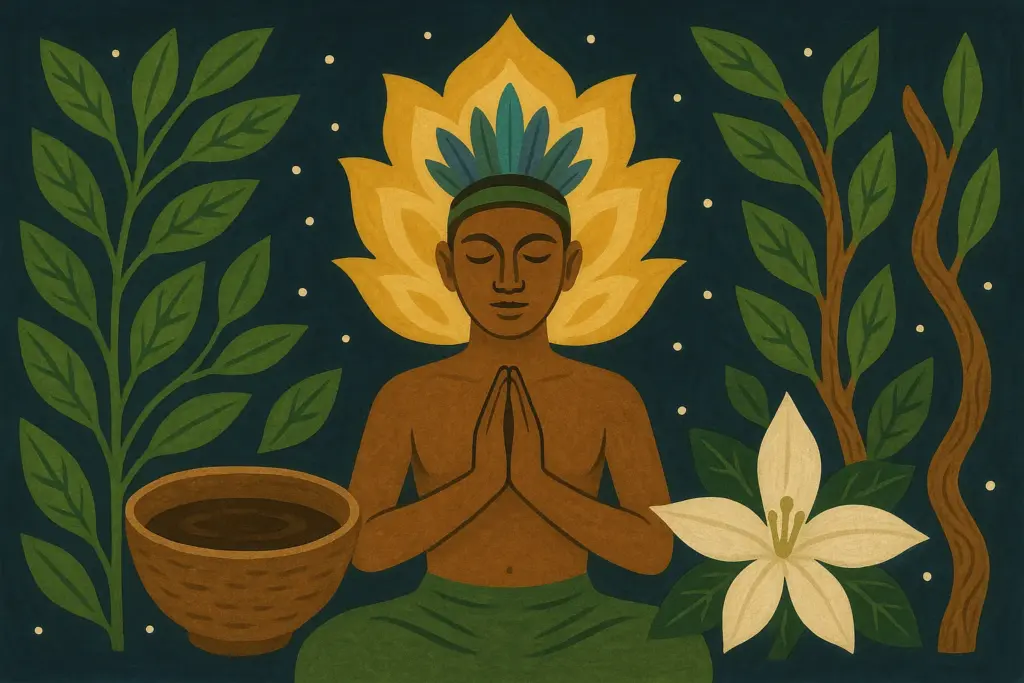
Plant Teachers and Visual Dialogue
In the heart of the Colombian Amazon, where the Putumayo River winds through ancient forests, indigenous shamans have been working with plant medicines for thousands of years. These curanderos understand something that modern science is only beginning to appreciate: that certain plants can activate regions of consciousness where ideograms aren’t just seen—they’re experienced as living, intelligent entities.
When you drink yagé in ceremony, you’re not just consuming a psychoactive brew. You’re entering into a dialogue with what indigenous peoples call “plant teachers”—conscious entities that communicate through a visual language older than human civilization. In the Colombian yagé tradition, such symbols are often regarded as teachings from the spirit of the medicine, direct transmissions of wisdom that bypass ordinary learning processes. This isn’t metaphor or mystical speculation; it’s a consistent, reproducible phenomenon reported by thousands of ceremony participants across cultures and continents.
The Living Quality of Visionary Symbols
The ideograms that appear in ayahuasca visions possess qualities that distinguish them from ordinary mental imagery. They’re often geometrically perfect, displaying mathematical relationships that the conscious mind couldn’t construct. They appear to move with their own intelligence, morphing and evolving in response to the observer’s attention. Most remarkably, they seem to carry information that unfolds over time, revealing layers of meaning that can take months or years to fully understand.
Lightwarrior, another participant in our ceremonies, described this phenomenon beautifully: “The transformational experience was beyond words. Symbols appeared that seemed to be alive, carrying healing energy that I could feel in my body. It wasn’t just visual—these ideograms were somehow carriers of actual healing power.”
Universal Patterns in Individual Visions
This description captures something crucial about indigenous understanding of ideograms: they’re not just representations of reality—they are reality, operating on a level where consciousness and cosmos intersect. In the Shipibo tradition of Peru, for instance, the intricate geometric patterns that appear in visions are understood to be the actual structure of reality made visible. These patterns, called kené, are seen as the fundamental organizing principles of the universe, the ideographic code that underlies all existence.
What makes these visionary ideograms particularly fascinating is their consistency across different individuals and cultures. Researchers studying ayahuasca experiences have documented recurring visual motifs that appear regardless of the participant’s cultural background or previous exposure to indigenous art. The serpent, the jaguar, the tree of life, geometric mandalas, and flowing botanical forms appear again and again, suggesting that these symbols represent something fundamental about the structure of consciousness itself.
But indigenous shamans go further than simply observing these symbols—they learn to read them, interpret them, and even work with them therapeutically. A skilled curandero can look at the ideograms appearing in a patient’s vision and diagnose spiritual imbalances, identify the sources of illness, and prescribe specific healing interventions. The symbols become a diagnostic tool, a therapeutic medium, and a communication channel all at once.
Shamanic Translation of Visual Language
This practical application of visionary ideograms represents a sophisticated understanding of how symbols interact with consciousness to produce healing effects. When a shaman “sings” the patterns they see in vision, they’re not just making music—they’re translating ideographic information into sonic form, using sound to activate the healing potential encoded in the visual symbols.
The Mazatec curandera María Sabina described this process as “speaking with the book”—referring to the way plant medicines reveal pages of ideographic information that can be read like a sacred text. But unlike static books, these visionary ideograms are interactive, responding to questions, revealing new information based on the observer’s needs, and adapting their message to the specific healing requirements of each individual.

The Co-Creative Nature of Symbolic Communication
This interactive quality of visionary ideograms suggests something profound about the nature of consciousness itself. Rather than being passive receivers of symbolic information, we appear to be active participants in a co-creative process where meaning emerges from the relationship between observer and symbol. The ideograms don’t just carry predetermined messages—they generate new meanings through their interaction with human awareness.
Modern neuroscience is beginning to understand the mechanisms behind this phenomenon. Research has shown that psychedelic compounds activate the brain’s default mode network in ways that increase connectivity between normally separate regions. This enhanced neural connectivity may explain why visionary ideograms often combine elements from different sensory modalities—visual patterns that carry emotional information, geometric forms that convey narrative content, or abstract symbols that trigger specific bodily sensations.
Plant Intelligence and Multidimensional Communication
But indigenous shamans have always understood that the real power of visionary ideograms lies not in their neurological effects but in their ability to connect human consciousness with what they call the “plant intelligence”—a form of awareness that exists beyond individual minds and operates according to principles that transcend ordinary causality.
This plant intelligence communicates through ideograms because visual symbols can carry multidimensional information in ways that linear language cannot. A single visionary symbol might simultaneously convey diagnostic information about physical health, guidance about life decisions, insights into past trauma, and prophetic glimpses of future possibilities. It’s a form of communication that operates more like a hologram than a book—each part contains information about the whole, and the meaning changes depending on the angle from which it’s viewed.
Why Symbols Matter in Spiritual Healing
Jung’s Archetypal Discoveries
The therapeutic power of ideograms isn’t just indigenous folklore—it’s a phenomenon that modern psychology and neuroscience are beginning to understand and validate. When we encounter meaningful symbols, whether in dreams, meditation, or plant medicine ceremonies, we’re activating healing processes that operate below the threshold of conscious awareness.
Carl Jung, the pioneering psychologist who first mapped the relationship between symbols and healing, discovered that certain images have the power to reorganize psychological structures in ways that promote integration and wholeness. He called these “archetypal symbols”—ideograms that connect individual consciousness with universal patterns of meaning. Jung observed that when patients encountered these symbols in dreams or active imagination, they often experienced spontaneous healing of psychological wounds that had resisted conventional therapy.
Multidimensional Healing Through Symbols
But Jung’s insights only scratch the surface of what indigenous healers have known for millennia: that ideograms can facilitate healing on multiple levels simultaneously—physical, emotional, mental, and spiritual. This multidimensional healing occurs because symbols operate as bridges between different layers of consciousness, allowing information and energy to flow between normally separate aspects of the self.
In ayahuasca ceremony, this healing process often begins with the appearance of diagnostic ideograms—symbols that reveal the nature and location of imbalances within the participant’s energy system. These might appear as dark spots in otherwise luminous geometric patterns, representing areas where trauma has created blockages in the flow of life force. Or they might manifest as distorted versions of natural forms—twisted trees, murky waters, or predatory animals—indicating where psychological wounds have disrupted the natural harmony of consciousness.
The Precision of Symbolic Diagnosis
The remarkable thing about these diagnostic ideograms is their precision. Participants often report seeing symbols that accurately reflect physical conditions they weren’t consciously aware of, or psychological patterns they had never recognized. The plant medicine seems to scan the entire system—body, mind, and spirit—and present its findings in ideographic form, creating a visual map of areas that need attention.
But the healing process doesn’t stop with diagnosis. As the ceremony progresses, participants often witness the transformation of these problematic symbols in real-time. Dark spots begin to glow with healing light. Twisted forms straighten and become beautiful. Predatory animals transform into protective allies. This isn’t just symbolic representation—participants report feeling actual physical and emotional shifts corresponding to these visual transformations.
This process works because ideograms engage what neuroscientists call “embodied cognition”—the way our brains process symbolic information through the entire nervous system, not just the visual cortex. When we see a symbol of healing in ceremony, our brain doesn’t just register it as an image; it activates neural networks associated with actual healing processes, triggering cascades of neurochemical changes that promote physical and psychological restoration.
Bypassing Mental Resistance
The therapeutic power of ideograms also lies in their ability to bypass the rational mind’s resistance to change. Trauma and limiting beliefs often persist because they’re protected by psychological defense mechanisms that reject direct challenges. But symbols slip past these defenses, carrying healing information into the unconscious where it can do its work without triggering resistance.
This is why traditional psychotherapy, which relies primarily on verbal processing, sometimes fails to create lasting change. Words engage the analytical mind, which can intellectualize insights without integrating them. Ideograms, by contrast, speak directly to the emotional and somatic layers of consciousness where trauma is actually stored, facilitating healing at the source rather than just at the level of understanding.
Collective and Ancestral Healing
Indigenous healers have developed sophisticated techniques for working therapeutically with visionary ideograms. They might guide participants to interact with the symbols they’re seeing—to breathe light into dark areas, to dialogue with animal spirits, or to allow geometric patterns to reorganize themselves into more harmonious configurations. These interventions work because they engage the participant as an active agent in their own healing rather than a passive recipient of treatment.
The healing power of ideograms extends beyond individual therapy to collective and ancestral healing as well. Many ceremony participants report encountering symbols that represent not just their personal wounds but the traumas of their family lineages, their cultural groups, or even their species. Working with these collective ideograms can facilitate healing that ripples backward through time and outward through relationships, addressing wounds that extend far beyond individual experience.
This collective dimension of ideographic healing reflects the indigenous understanding that consciousness is not confined to individual brains but exists as a field that connects all beings. When we heal symbolic patterns within our own awareness, we’re simultaneously healing those patterns wherever they appear in the larger web of consciousness. This is why ceremony participants often report that their healing work benefits not just themselves but their families, communities, and even people they’ve never met.
Developing Symbolic Literacy
The integration of ideographic healing into daily life requires developing what we might call “symbolic literacy”—the ability to recognize and work with meaningful symbols as they appear in dreams, synchronicities, and everyday experiences. This isn’t about becoming superstitious or seeing signs everywhere; it’s about cultivating sensitivity to the symbolic dimension of reality that’s always present but often overlooked in our word-focused culture.
Experiencing Symbolic Language at Camino al Sol
At Camino al Sol, nestled in the sacred mountains of Colombia, we understand that working with ideograms isn’t just an intellectual exercise—it’s a lived practice that requires proper preparation, skilled guidance, and a safe container for exploration. Our ceremonies are designed to create optimal conditions for encountering the symbolic language of plant consciousness while ensuring that participants can integrate these experiences in meaningful ways.
The journey into ideographic consciousness begins long before you drink the medicine. Our preparation process includes education about the symbolic traditions of indigenous cultures, meditation practices that enhance visual sensitivity, and dietary protocols that purify the nervous system for optimal receptivity. We’ve learned that participants who understand the historical and cultural context of ideographic communication have richer, more meaningful experiences with the symbols they encounter in ceremony.
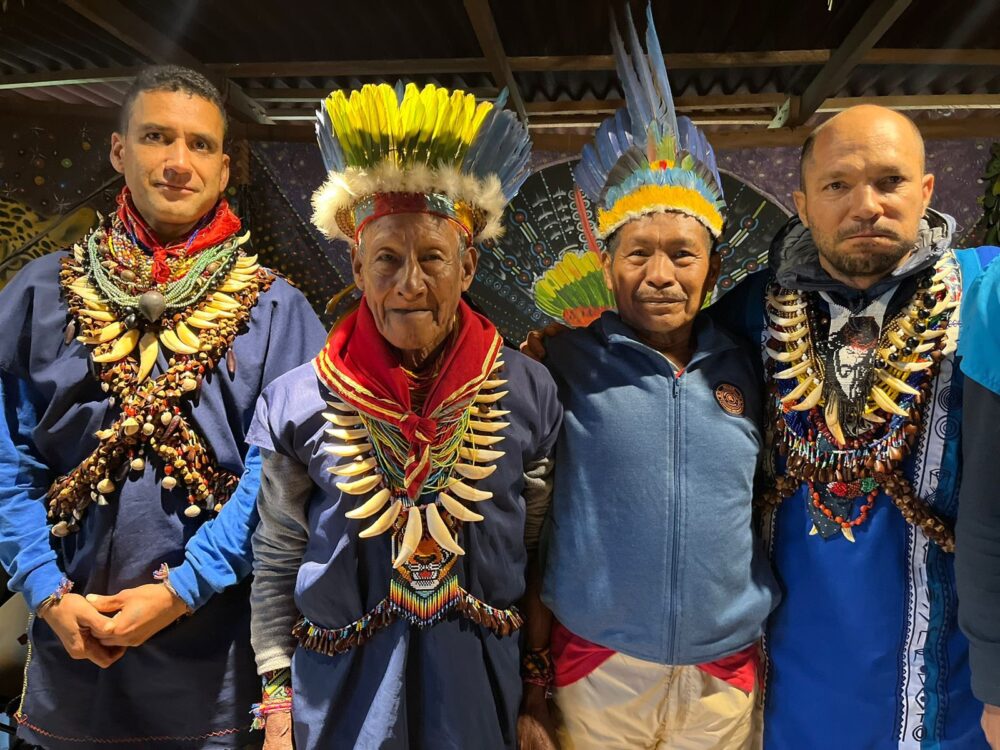
During ceremony, our experienced facilitators create a sacred space where the symbolic language of yagé can unfold naturally. We work with traditional icaros—healing songs that themselves function as auditory ideograms, carrying therapeutic information in their melodic and rhythmic patterns. These songs help guide participants through the symbolic landscapes they encounter, providing navigation tools for working with challenging imagery and amplifying the healing potential of beneficial symbols.
Our facilitators are trained to recognize the signs that indicate when participants are encountering significant ideographic material. They know how to provide gentle guidance that supports the natural unfolding of symbolic healing without interfering with the organic intelligence of the process. Sometimes this means offering specific breathing techniques to help integrate intense visual experiences. Other times it involves providing reassurance that the strange symbols appearing in vision are normal and beneficial aspects of the healing process.
The integration work that follows ceremony is equally important. We provide participants with tools for working with the symbolic material they’ve encountered—journaling techniques for capturing fleeting images, artistic practices for expressing non-verbal insights, and meditation methods for continuing dialogue with the symbols that have appeared. Many participants discover that the ideograms from their ceremonies continue to evolve and reveal new meanings long after the immediate effects of the medicine have worn off.
What makes our approach unique is our understanding that ideographic healing is not a one-time event but an ongoing relationship. The symbols that appear in ceremony are not just temporary visions—they’re doorways into deeper layers of consciousness that can be revisited and explored over time. We teach participants how to maintain connection with their symbolic experiences through daily practices that keep these doorways open.
A Living Environment of Symbolic Healing
Our retreat setting itself functions as a living ideogram—a carefully designed environment that supports symbolic consciousness through its integration of natural beauty, sacred geometry, and indigenous artistic traditions. The architecture, landscaping, and ceremonial spaces all work together to create a visual language that reinforces the healing themes participants encounter in their inner journeys.
Many of our participants report that their relationship with symbols continues to deepen long after they return home. They begin noticing meaningful patterns in nature, recognizing symbolic messages in their dreams, and finding that their creative expression becomes infused with ideographic elements that carry healing power for themselves and others.
The transformation that occurs through working with ideograms extends far beyond personal healing. Participants often discover that their enhanced symbolic literacy allows them to communicate more effectively with children, who naturally think in images rather than words. They find themselves more sensitive to the non-verbal communication of animals and plants. They develop greater appreciation for art, architecture, and design as forms of ideographic expression that can influence consciousness and promote wellbeing.
Perhaps most importantly, participants learn to trust their own symbolic intelligence—the innate capacity for meaning-making that exists within every human being. In our culture that privileges verbal and analytical thinking, many people have lost touch with their natural ability to read the symbolic language of consciousness. Working with plant medicines in a supportive environment helps restore this capacity, reconnecting people with a form of intelligence that is both ancient and urgently needed in our modern world.
The ideograms you encounter at Camino al Sol are not just personal visions—they’re part of a larger conversation between human consciousness and the intelligence of the natural world. By learning to participate in this conversation, you become part of an ancient tradition of symbolic healing that connects you with indigenous wisdom keepers, mystical traditions from around the world, and the timeless patterns that organize reality itself.
If you’re feeling called to explore the symbolic language of consciousness, to encounter the living ideograms that can facilitate profound healing and transformation, we invite you to join us for a ceremony at Camino al Sol. Our experienced team is here to guide you safely through this ancient practice, helping you develop the symbolic literacy that can enrich every aspect of your life.
Would you like to explore these teachings within sacred ceremony? The symbols are waiting to speak with you, and we’re here to provide the safe, supportive environment where this ancient dialogue can unfold.
Ready to explore the symbolic language of consciousness? Explore our Authentic Ayahuasca Retreat in Colombia and discover how plant medicine can open doorways to profound healing and transformation. For those prioritizing safety in their exploration, we recommend reading our comprehensive Ayahuasca Safety Guide and understanding that A Healing Journey Is Not a Straight Line as you prepare for your journey into the realm of living symbols.
The ideograms of consciousness are calling. Will you answer?

